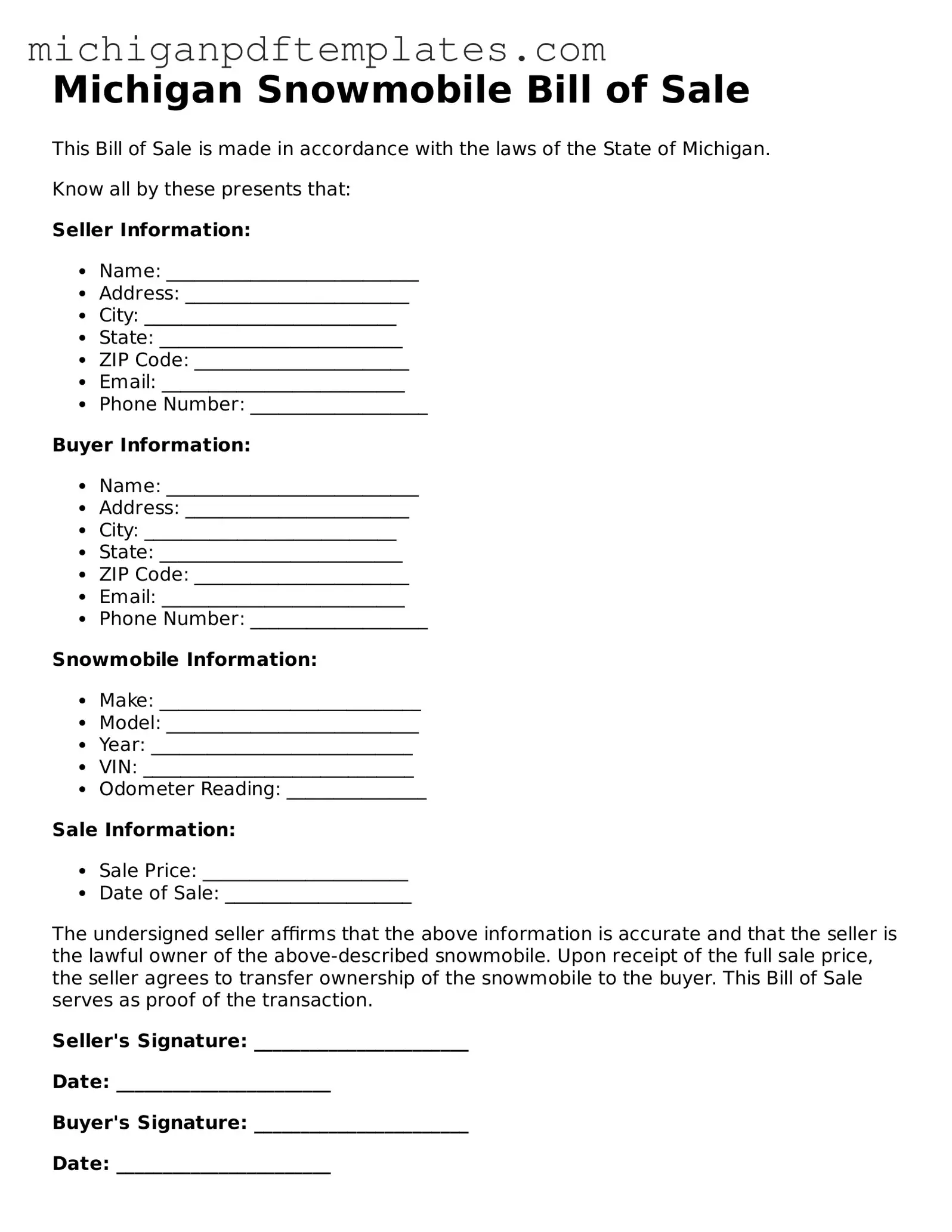Legal Michigan Snowmobile Bill of Sale Template
The Michigan Snowmobile Bill of Sale form is a crucial document that facilitates the transfer of ownership for snowmobiles in the state of Michigan. This form not only provides a record of the transaction but also protects both the buyer and seller by documenting essential details about the snowmobile and the sale. To ensure a smooth and legal transfer, it is important to fill out this form accurately.
Ready to complete your transaction? Fill out the form by clicking the button below.
Get Your Form Now
